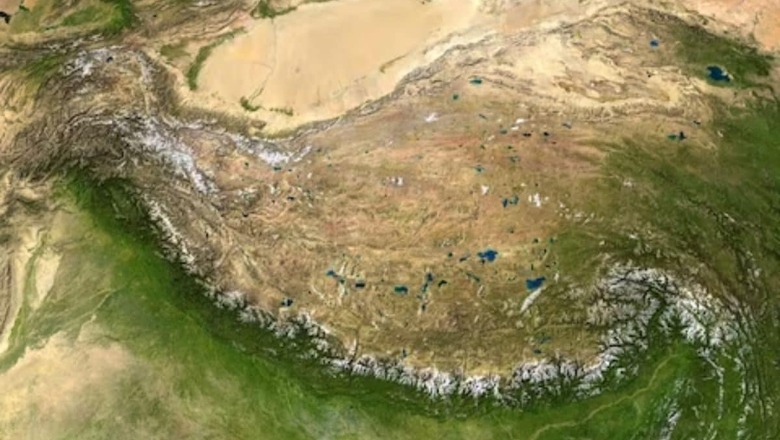
views
A recent study reveals that Tibet may be breaking apart as the upper half of the Indian tectonic plate is tearing and bending due to repeated impact. The world’s highest mountain range, the Himalayas, may have more complex geology beneath it than previously thought. This was revealed in a recent study that was presented at the American Geophysical Union annual meeting. Because of the ongoing collisions between the Indian and Eurasian tectonic plates, the Himalayas are still growing. Geoscientists know what happens when a continental plate and an oceanic plate collide. However, because the densities of the two colliding continental plates are similar, it is difficult to predict how they will meet. Subduction is the process by which the denser oceanic plate moves beneath the lighter continental plate. Underplating, a process where one continental plate moves under the other without delving deeply into the mantle, is how some geoscientists think the Indian plate may be sliding beneath the Eurasian plate.
The new study states that the Indian plate is not going down very much and is breaking and bending. Researchers studied seismic waves and investigated the effect of this process. According to Science Magazine, while the Indian Plate is 200 kilometres deep at some places, it is only 100 kilometres deep at some places. This shows that this plate is separating like a peel.
Many believe that the Indian plate is subducting in its core regions, while its outside regions are pressing up against the majority of Tibet.
In 2022, scientists recorded the fluctuations in helium erupting from local geothermal springs to determine the Himalayan plate border. Accordingly, earlier geochemical research also points to the possibility that seismic waves produce indications of a splitting plate.
The exact mechanism by which tearing and warping deep below the crust cause the accumulation of tension at the surface is still a mystery to scientists. They may learn more about the regions along the plate border, where there is a higher danger of earthquakes, thanks to the new study.




















Comments
0 comment